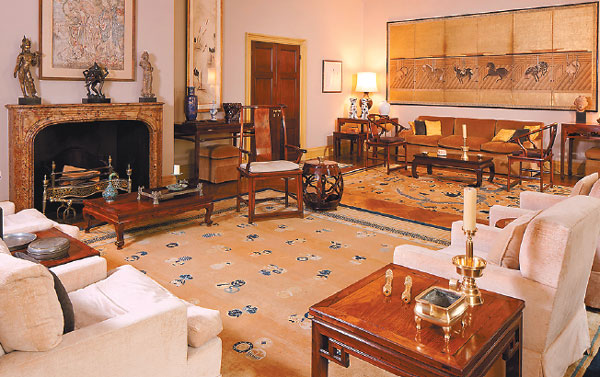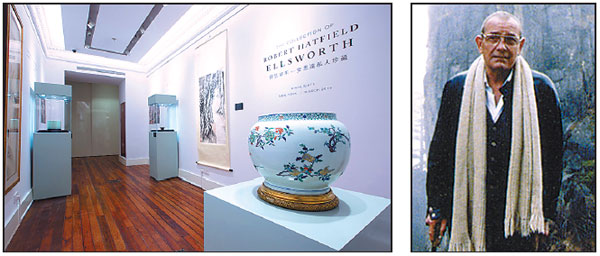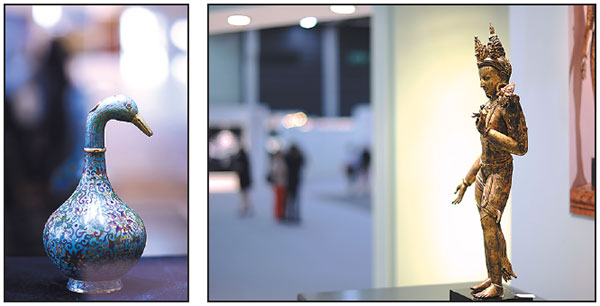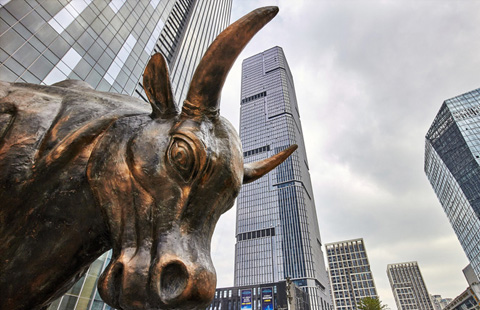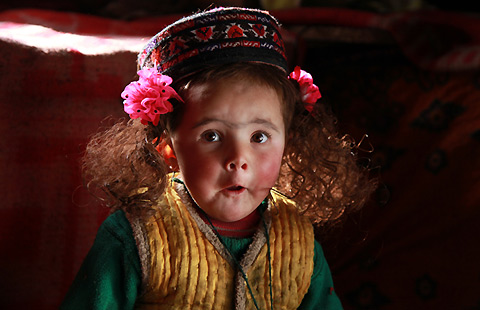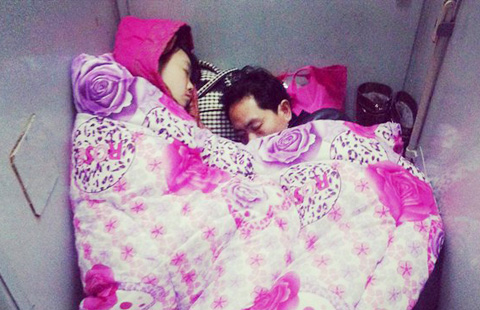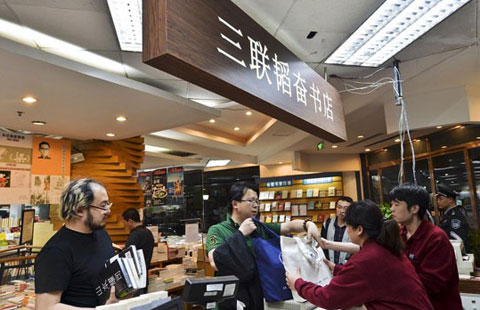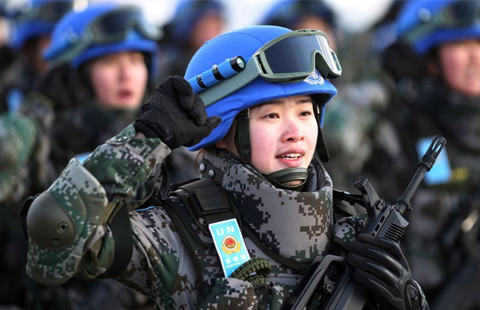Auction with a Chinese heart
Updated: 2014-12-23 07:31
By Deng Zhangyu(China Daily USA)
|
|||||||||
The death of the West's pre-eminent collector of Asian art means a treasure trove will go under the hammer in March, Deng Zhangyu reports.
The elevator rattles as it rises to Robert H. Ellsworth's apartment on Fifth Avenue in New York. Walking from one room to another, we can hardly take our eyes from assortments of Chinese paintings, old-fashioned jade, Buddha sculptures and Ming Dynasty (1368-1644) furniture.
As if walking to the end of the house of 22 rooms, Ellsworth, the prestigious late art dealer and collector of Asian art, would sit at a table, caressing an animal-like antique object with one hand; on the floor, a rug used in the emperor's quarter of the Forbidden Palace in Beijing.
|
A room at Robert H. Ellsworth's apartment on Fifth Avenue in New York. Photos Provided to China Daily |
|
Left: Ellsworth's collection is on display in Shanghai. Right: Ellsworth on Mount Huangshan in Anhui province during his trip to China in 1995. |
|
Left: A piece of porcelain in his collection. Right: His collection is displayed in Hong Kong. |
Last week Xiang Liping talked about his 2011 interview of Ellsworth, a rare chance to visit the master collector's house at his late year.
Ellsworth devoted his life to loving, collecting and dealing Asian art. However, these art treasures will be dispersed into collectors across the world in the wake of his death in August at age 85, except those donated to museums like the British Museum and the Metropolitan Museum of Art.
More than 2,000 art objects at Ellsworth's museum-like house will be auctioned at Christie's in March, the biggest private collection of Asian art to appear at auction.
"Our men are still busy categorizing Ellsworth's art legacy at his apartment. All the objects will be sold in live auction and online," says Jonathan Stone, chairman of Asian Art at Christie's.
He adds that the number of objects is so huge that they need more time to finish sorting through them to get an accurate figure.
A major part of Ellsworth's legacy is Chinese art, which he started collecting during childhood although he didn't know a Chinese word.
He was the first to bring Ming Dynasty furniture to the West in the 1950s. He made himself an expert on it and wrote a book, Chinese Furniture: Hardwood Examples of the Ming and early Ch'ing Dynasties, in the 1970s, even earlier than Chinese scholars' books on the subject.
Because of his obsession with Chinese art and his unique taste, in the 1960s, Ellsworth began collecting Chinese paintings of the 19th and early 20th centuries, a period that has been neglected by art historians.
Ellsworth's collecting of Chinese art reached a climax when China and the US established diplomatic ties in the 1970s, says Xie Fei, head of Chinese painting and calligraphy at Christie's.
Xie says Ellsworth was a big fan of Shi Lu (1919-1982), a well-known Chinese artist who was a master at painting landscapes and flowers. The collector visited Shi Lu's family members many times and bought lots of Shi's works from them in the last century.
In addition to his collection, Ellsworth also set up the Chinese Heritage Art Foundation in Hong Kong in the 1990s, dedicated to repairing the ancient houses of the Ming and Qing (1644-1911) dynasties in Huangshan in Anhui province. At that time, most Chinese didn't realize the value of the structures in Huangshan's ancient villages.
Although Ellsworth had done much in Chinese art, his name became known in China only after 2000, when he donated a warrior stone carving to the China National Museum. That object was a rare art treasure dating back to between 907 and 960, a typical stone carving of its time.
It was in 2003 that Ellsworth made a big splash among Chinese collectors and antique circles. He sold a treasured calligraphy of Chunhua Ge Tie collection at a low price of $4.5 million to Shanghai Museum, though a Japanese buyer offered $11 million for it. The collection engraved many masters' calligraphy works before the Song Dynasty (960-1279).
According to earlier reports, Ellsworth said that the calligraphy belonged to China. He would only sell it to Chinese buyers despite active buyers outside China offering much higher prices.
For years, Ellsworth had bought and sold countless antique objects. But the ones he kept at his houses were those he wanted to live with. "If you don't want to stay with your collections day and night, then don't buy them," he advised prospective collectors.
Xiang Liping, a TV program producer in China, recalled that when he met the great Chinese art collector at his museum-like house in 2011, Ellsworth kept caressing a pi xiu in his hands. The pi xiu is one of the four mythical creatures in ancient China, including the dragon and phoenix. Ellsworth treated the pi xiu like a pet dog. He told Xiang all his collections were his pets.
"When I tell my friends that Ellsworth's collection is going to be auctioned at Christie's, they all say it's a must-go auction. There were no other chances to buy such rare art objects collected by a Western collector," says Xiang.
In the 20th century, many treasured Chinese antiques and artworks were lost during war times. Ellsworth was one of the first Western collectors to seek them out and became an expert and scholar on Chinese art.
Many see the auction of Ellsworth's collection as the end of an era of such Western collectors.
Contact the writer at dengzhangyu@chinadaily.com.cn
(China Daily USA 12/23/2014 page8)
Most Viewed
Editor's Picks

|

|
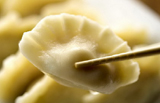
|
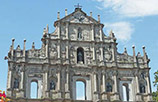
|
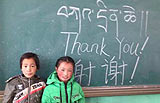
|

|
Today's Top News
No judgment yet on Sony; evidence awaited
Learning about 'Americanness' from Chinese-American vets
Alibaba IPO fuels startup boom to rival Silicon Valley
China's top Party offcial probed for disciplinary violations
No judgment yet on Sony
US arms sales to Taiwan protested
Chinese developer buys LA Marriott
Beijing seeks new tourism spotlight in New York
US Weekly

|

|
